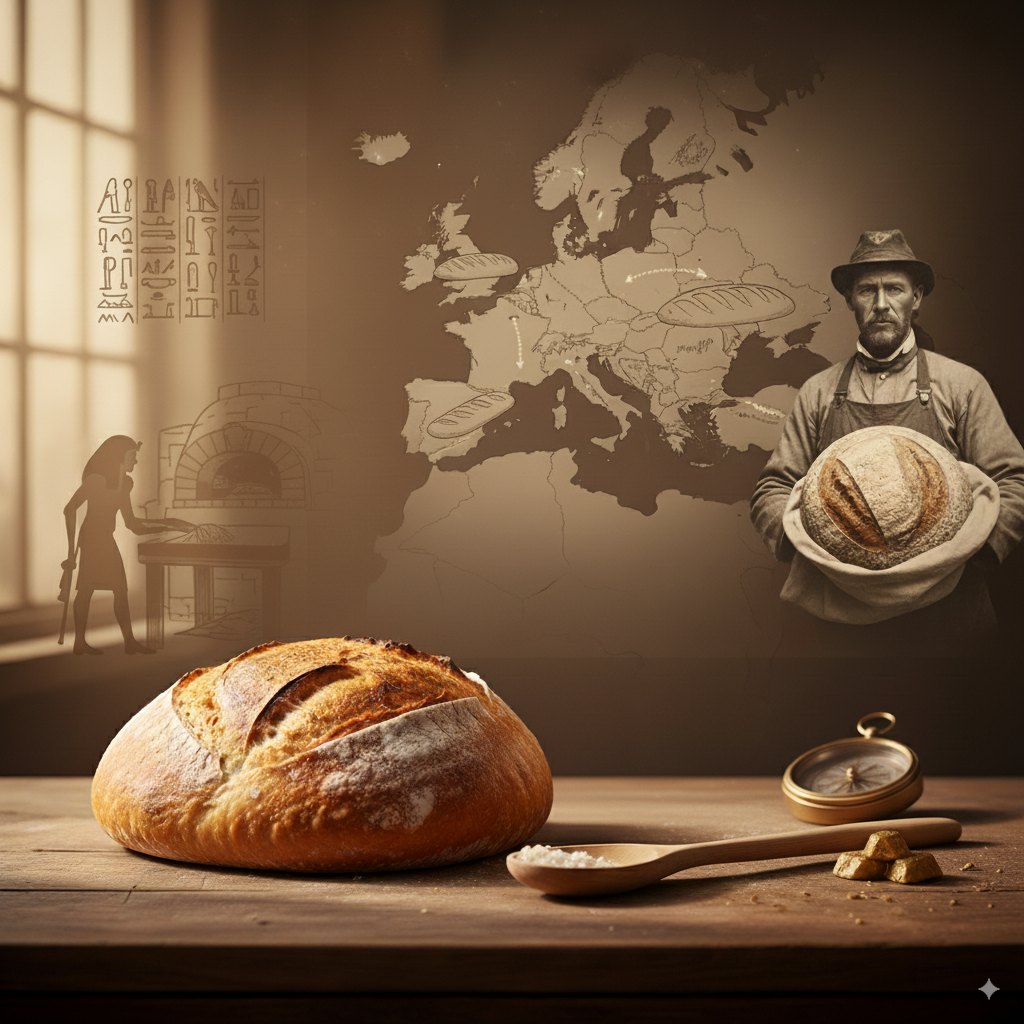Sourdough History
Sourdough. A simple blend of flour, water, and time, yet its deceptive simplicity hides a deep and rich history that is intimately tied to the rise of civilizations, human migration, and culinary evolution. Today, we delve into the fascinating origins of sourdough and its timeless significance.
Baking With the Ancients
Sourdough is as old as civilization itself. It dates back over 5000 years, with the earliest evidence of sourdough found in ancient Egyptian tombs. The Egyptians are credited with being the first civilization to use wild yeast to leaven their bread. Rather than baking dense, flat breads like their ancestors, they discovered the magic of fermentation, transforming their bread into a lighter, airier staple that we can recognize as a precursor to modern-day sourdough.
A Loaf for the Ages
From Egypt, the art of sourdough baking traveled around the globe. It found its way to Europe, where each region, from France to Italy to Germany, added their own twist, giving rise to a vast variety of sourdough bread. The Greeks revered sourdough, and Pliny the Elder even described the process of sourdough baking in his writings.
The New World Kneads
Sourdough took on a new life with the migration to the New World. The iconic San Francisco Sourdough, for example, was born during the California Gold Rush, where miners relied on hearty sourdough loaves as a nutritional staple. They even referred to the sourdough starter as their “mother” due to its ability to birth endless loaves of bread.
The Science Behind the Sour
Fast forward to today, sourdough is experiencing a renaissance, not just for its distinct taste and texture, but also for the science behind it. A sourdough starter is a vibrant ecosystem of wild yeasts and bacteria. The yeasts produce carbon dioxide that helps the bread rise, while the lactic acid bacteria create that distinctive sour tang and also make the bread more digestible.
Sourdough: More than Bread
Yet, the significance of sourdough extends beyond its role as a staple food. It is a living link to our past, a testament to human ingenuity, and a symbol of resilience and sustainability. Maintaining a sourdough starter requires patience and care, teaching us to slow down and connect with the natural rhythms of life. Every loaf we bake is a continuation of an ancient tradition, passed down through generations.
Sourdough isn’t just a trend, it’s a tradition – one that connects us to the roots of baking and to each other. So the next time you bite into a piece of sourdough, remember, you’re not just tasting bread, but a piece of history.
At Sourdough Savvy, we celebrate this rich history and invite you to join us on this journey. Whether you’re new to sourdough or a seasoned baker, there’s always something to learn, to explore, and to savor in the world of sourdough. Happy baking!
